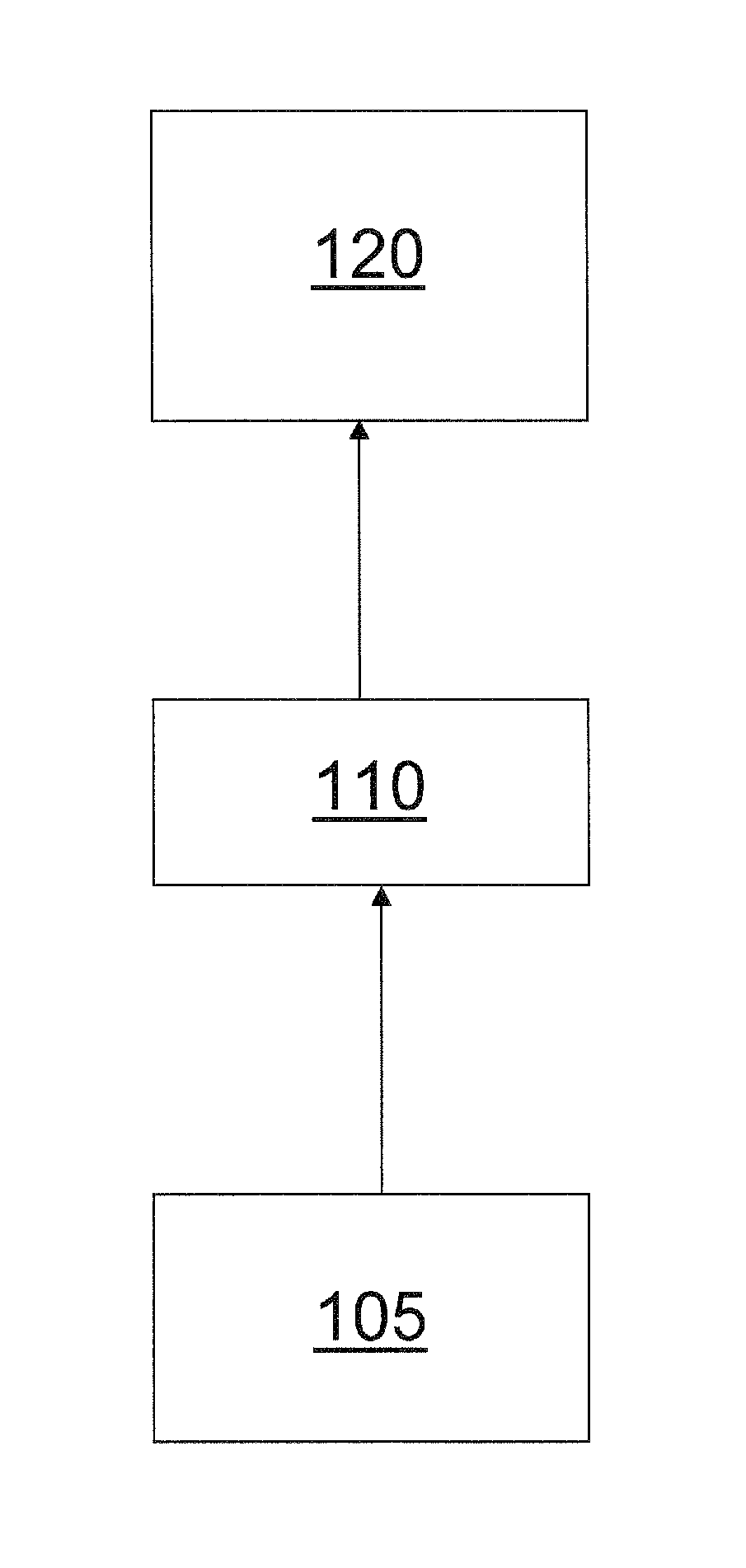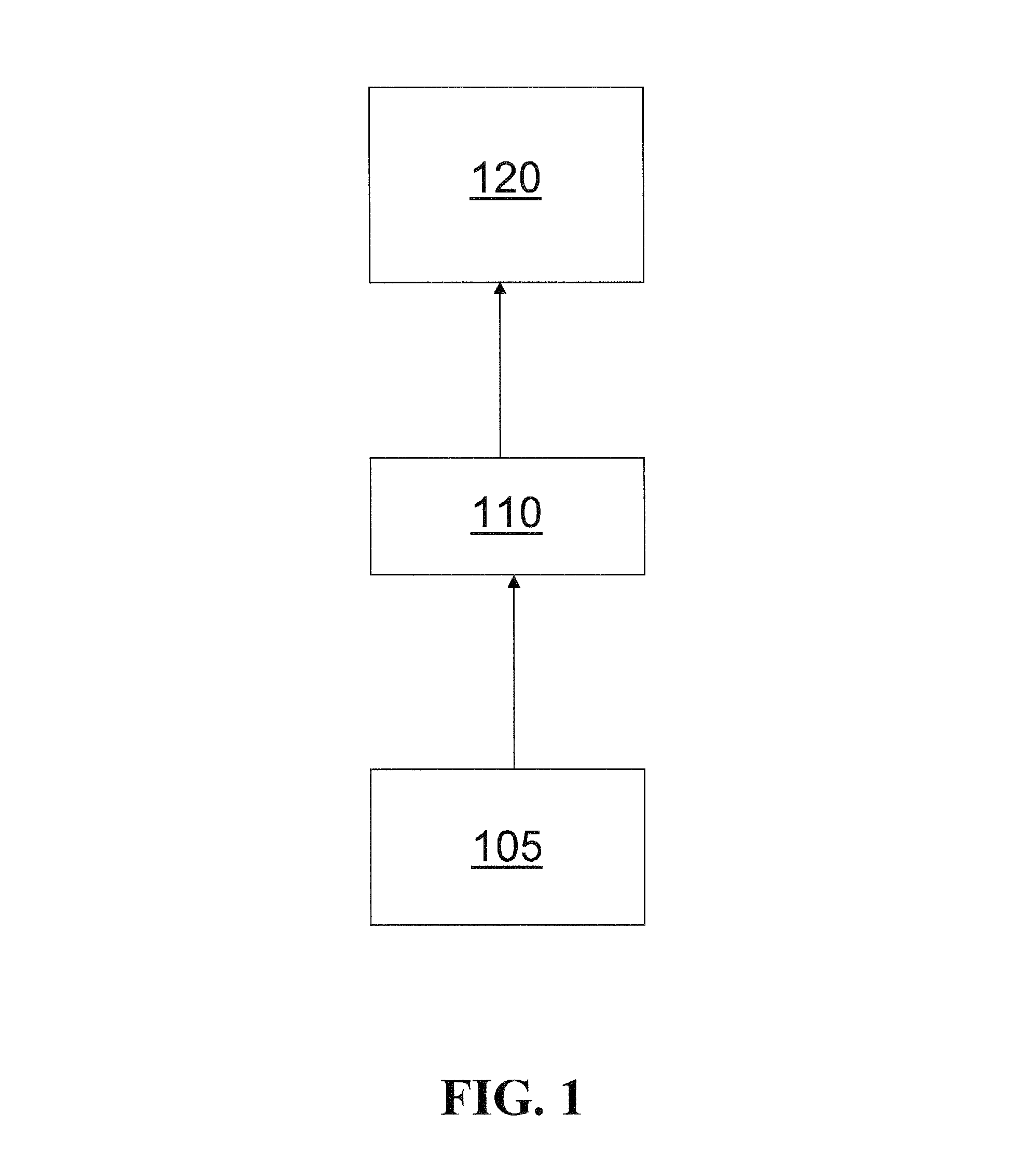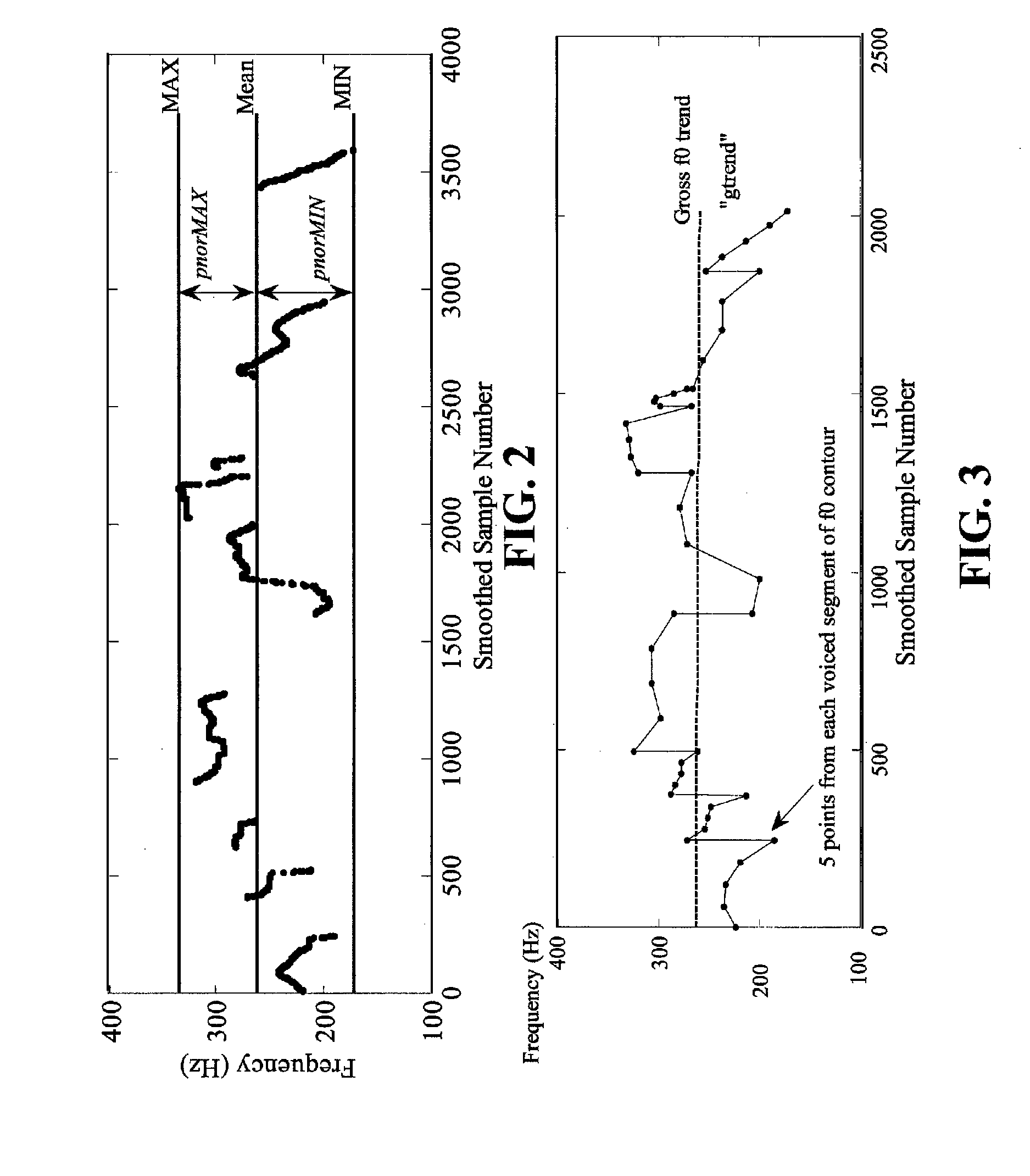Apparatus and method for determining an emotion state of a speaker
a speaker and emotion state technology, applied in the field of apparatus and method for determining the emotion state of a speaker, can solve the problem of failing to consider other parameters associated with the speech, and achieve the effect of reducing the number of speech parameters
- Summary
- Abstract
- Description
- Claims
- Application Information
AI Technical Summary
Problems solved by technology
Method used
Image
Examples
example 2
Development of an Acoustic Model of Emotion Recognition
[0074]The example included in Chapter 3 of the cited Appendix shows that emotion categories can be described by their magnitude on three or more dimensions. Chapter 5 of the cited Appendix describes an experiment that determines the acoustic cues that each dimension of the perceptual MDS model corresponds to.
Fundamental Frequency
[0075]Williams and Stevens (1972) stated that the f0 contour may provide the “clearest indication of the emotional state of a talker.” A number of static and dynamic parameters based on the fundamental frequency were calculated. To obtain these measurements, the f0 contour was computed using the SWIPE′ algorithm (Camacho, 2007). SWIPE′ estimates the f0 by computing a pitch strength measure for each candidate pitch within a desired range and selecting the one with highest strength. Pitch strength is determined as the similarity between the input and the spectrum of a signal with maximum pitch strength, wh...
example 3
Evaluating the Model
[0118]The purpose of this second experiment was to test the ability of the acoustic model to generalize to novel samples. This was achieved by testing the model's accuracy in classifying expressions from novel speakers. Two nonsense sentences used in previous experiments and one novel nonsense sentence were expressed in 11 emotional contexts by 10 additional speakers. These samples were described in an acoustic space using the models developed in Experiment 1. The novel tokens were classified into four emotion categories (happy, sad, angry, and confident) using two classification algorithms. Classification was limited to four emotion categories since these emotions were well-discriminated in SS. These category labels were the terms most frequently chosen as the modal emotion term by participants in the pile-sort task described in Chapter 2, except “sad” (the more commonly used term in the literature). These samples were also evaluated in a perceptual identificati...
embodiment 1
[0150]A method for determining an emotion state of a speaker, comprising: providing an acoustic space having one or more dimensions, wherein each dimension of the one or more dimensions of the acoustic space corresponds to at least one baseline acoustic characteristic; receiving a subject utterance of speech by a speaker; measuring one or more acoustic characteristic of the subject utterance of speech; comparing each acoustic characteristic of the one or more acoustic characteristic of the subject utterance of speech to a corresponding one or more baseline acoustic characteristic; and determining an emotion state of the speaker based on the comparison, wherein the emotion state of the speaker comprises at least one magnitude along a corresponding at least one of the one or more dimensions within the acoustic space.
PUM
 Login to View More
Login to View More Abstract
Description
Claims
Application Information
 Login to View More
Login to View More - R&D
- Intellectual Property
- Life Sciences
- Materials
- Tech Scout
- Unparalleled Data Quality
- Higher Quality Content
- 60% Fewer Hallucinations
Browse by: Latest US Patents, China's latest patents, Technical Efficacy Thesaurus, Application Domain, Technology Topic, Popular Technical Reports.
© 2025 PatSnap. All rights reserved.Legal|Privacy policy|Modern Slavery Act Transparency Statement|Sitemap|About US| Contact US: help@patsnap.com



